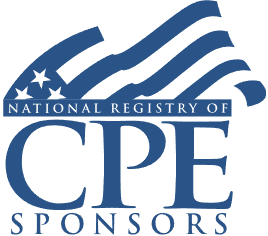Reverse SALT Audits: Examining Tax Reform Positions, Sales Sourcing, Combined Reporting Methods for Potential Refunds

Course Details
- smart_display Format
On-Demand
- signal_cellular_alt Difficulty Level
Intermediate
- work Practice Area
Corporate Tax
- event Date
Tuesday, June 29, 2021
- schedule Time
1:00 p.m. ET./10:00 a.m. PT
- timer Program Length
110 minutes
-
BARBRI is a NASBA CPE sponsor and this 110-minute webinar is accredited for 2.0 CPE credits.
This course will provide SALT practitioners with the steps to analyze prior state income, sales and use, and franchise tax returns for potential refunds. Our panel of state and local tax experts will discuss identifying opportunities for tax savings generated by recent tax acts, reviewing sales sourcing methods and incentives frequently offered by states.
Faculty

Ms. Roberts has been making state and local tax (SALT) less taxing for thousands of businesses over the last 25 years. As a director of the SALTovation team at TaxOps, she guides dynamic businesses through compliance and strategic planning focused on minimizing risk and strengthening tax positions. Ms. Roberts honed her specialty at Andersen Worldwide/Andersen LLP, KPMG and Deloitte before moving in-house with a Fortune 500 company to administer state and local tax. She has also led the national SALT practice at a regional firm. Ms. Roberts is a member of the Colorado Legislative Task Force Concerning Tax Policy and a frequent speaker, instructor and author on SALT issues for industry and professional organizations.

Ms. Smith expertly weaves real-life examples into why business taxpayers, tax professionals, and tax providers should care about complex state and local tax (SALT) issues. This knowledge comes from expertly navigating the web of tax laws governing SALT issues for nearly 20 years. From working with clients inside their business, she knows the questions, issues and strategies for resolution that keep businesses on the tax compliance track. Ms. Smith combines technical knowledge and in-depth industry understanding in performing nexus studies, identifying areas of risk, and designing sustainable planning opportunities for achieving tax-specific business goals. Her practice covers state income tax, property tax, sales and use tax, and business incentives and credits. Prior to TaxOps, Ms. Smith was a member of the SALT practice at KPMG, serving large, multi-jurisdictional corporations and multi-tier partnerships across industries. She is a frequent speaker and the host of the SALTovation podcast, a podcast series featuring leading voices in states and local tax. Listen in on your favorite channel: https://saltovation.captivate.fm/listen.
Description
Businesses that have paid state income, franchise, or sales and use taxes in multiple jurisdictions can find substantial tax savings by performing a reverse audit. A reverse audit reviews SALT taxes paid to find opportunities for refunds of taxes previously paid. Potential changes unearthed for prior years are often applicable to future years, generating ongoing increased cash flow.
Recent federal legislative changes have been adopted, adopted with modifications, or ignored by individual states. The complexity of these changes has led to the missed and misinterpreted application of tax at the state level. Previous treatment of recent legislative changes and the states' current position on these changes deserve a closer look. Practitioners relying on same as last year's treatment for apportionment and allocation factors, business and nonbusiness income, and combined or consolidated reporting methods should give these a second look as well.
Businesses often overlook sales tax exemptions, exclusions, and state and local credits that can provide long-term tax savings to businesses. Tax advisers working with multi-jurisdictional businesses need to be aware of tax incentives commonly offered by states and localities.
Listen as our panel of SALT experts explains opportunities available when electing apportionment methods, the treatment of throwback sales, and SALT incentives available to mitigate the state and sales taxes paid by businesses.
Outline
- Reverse audits
- Sales tax
- State income tax
- Other taxes
- State tax credits
- Best practices
Benefits
The panel will review these and other critical issues:
- Identifying businesses that may benefit from a reverse audit
- Reviewing tax reform positions for potential savings
- Examining returns treatment of throwback sales and nowhere income for tax savings
- Recognizing common state credits and incentives
NASBA Details
Learning Objectives
After completing this course, you will be able to:
- Identify commonly unclaimed state credits and incentives
- Determine common state sales tax exemptions
- Decide which businesses are prime candidates for reverse audits
- Ascertain when the potential tax savings from amending state returns outweighs potential audit risks
- Field of Study: Taxes
- Level of Knowledge: Intermediate
- Advance Preparation: None
- Teaching Method: Seminar/Lecture
- Delivery Method: Group-Internet (via computer)
- Attendance Monitoring Method: Attendance is monitored electronically via a participant's PIN and through a series of attendance verification prompts displayed throughout the program
- Prerequisite: Three years+ business or public firm experience preparing complex tax forms and schedules, supervising other preparers or accountants. Specific knowledge and understanding of SALT taxation, nexus and apportionment as it applies to multi-state businesses.

Strafford Publications, Inc. is registered with the National Association of State Boards of Accountancy (NASBA) as a sponsor of continuing professional education on the National Registry of CPE Sponsors. State boards of Accountancy have final authority on the acceptance of individual courses for CPE Credits. Complaints regarding registered sponsons may be submitted to NASBA through its website: www.nasbaregistry.org.
Unlimited access to premium CLE courses:
- Annual access
- Available live and on-demand
- Best for attorneys and legal professionals
Unlimited access to premium CPE courses.:
- Annual access
- Available live and on-demand
- Best for CPAs and tax professionals
Unlimited access to premium CLE, CPE, Professional Skills and Practice-Ready courses.:
- Annual access
- Available live and on-demand
- Best for legal, accounting, and tax professionals
Unlimited access to Professional Skills and Practice-Ready courses:
- Annual access
- Available on-demand
- Best for new attorneys
Related Courses

Mitigating Personal Holding Company (PHC) Tax for Franchisors and Closely Held Businesses
Thursday, June 26, 2025
1:00 p.m. ET./10:00 a.m. PT